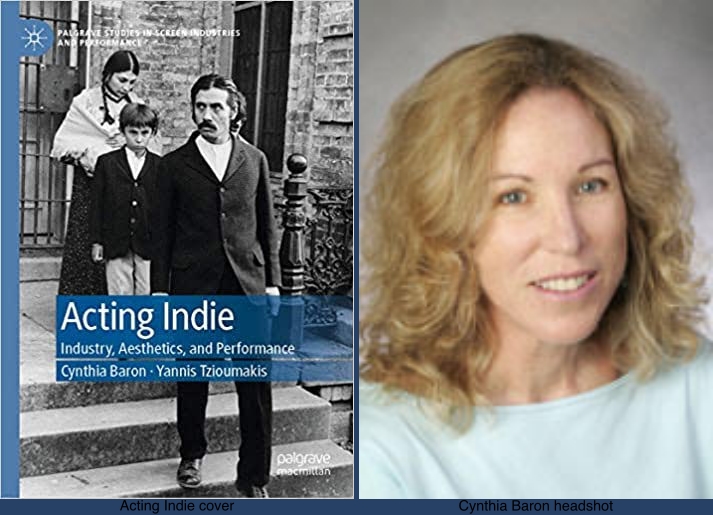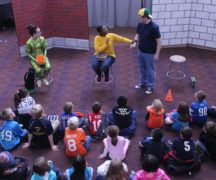By DAVID DUPONT
BG Independent News
The coronavirus pandemic upstaged the release of Cynthia Baron’s book on acting in independent film.
“Acting Indie: Industry, Aesthetics, and Performance,” co-authored with Yannis Tzioumakis, who teaches at the University of Liverpool, was published on schedule in February. However, planned events to celebrate its release never happened as conferences and meetings fell victim to restrictions intended to slow the spread of COVID-19.
Baron, who teaches film at Bowling Green State University, is not concerned though. She believes the book will have legs and still be relevant in a few years.
The project has its roots at a conference in Greece in 2007 where Tzioumakis and Baron met. They knew each other’s work. Baron had used Tzioumakis’ “American Independent Film” as a text in her classes. Baron decided she wanted to collaborate with “the smartest person in the room.”
Over dinner they sketched out the design of the book on a napkin. “Then it evolved,” she said in a recent telephone interview. Such is the nature and advantage of collaborating.
“I’ve done collaborations throughout my career,” she said. Though it can end up as more work, she said, “I think what’s produced is much stronger.”
Baron explained: “You have to keep testing it and keep changing it. … One of us would come up with a design, and the other would find flaws.”
Baron and Tzioumakis each brought their own perspectives and specialties to the table.
In her scholarship, she has worked to show the variety of styles of acting within movies and television.
One of those styles is exemplified in independent film.
These films, she said, tend to focus more on character, instead of the action of Hollywood blockbusters.
The shape of the actors’ faces, the cast of their frame, the look in their eyes, and the way their body moves through space are all crucial when the film is focused on character development, she said.
She notes that Denzel Washington’s performance in Spike Lee’s “He Got Game,” is different in tone and approach than his more high-profile roles, leaving behind his signature walk, for example.
A “quintessential” example, she said, was Paul Drano in 2018’s “Wildfire.” The movie doesn’t have or need a lot of action. “You just need to watch the small expressions in an actor’s face.”
Independent film helped launch the careers of stars such as Jennifer Lawrence, Mark Ruffalo, Philip Seymour Hoffman, Laura Linney, and many, many more.
The book also discusses the importance of “acting studios.” Many directors, Wes Anderson, Hal Hartley, John Cassavetes, John Sayles, and others draw on the talents of a familiar core of actors to realize their visions.
Actors also can play a role in financing films. This goes back to the launching of United Artists by founders Mary Pickford, Douglas Fairbanks, Charlie Chaplin, and D.W. Griffith. In the 1950s, Burt Lancaster and Kirk Douglas took a role in producing their own films.
The landscape of independent film itself is matter of debate. It defies strict categorization and can include everything from nano-budget films to the blockbusters of George Lucas.
“One of my interests in doing the book was so I could provide a much more nuanced analysis of each period,” Baron said.
Many textbooks, for example, fast forward through the 1970s, yet important work was being done then, she said.
Tzioumakis brought his expertise on the Hollywood Renaissance, launched by “Bonnie and Clyde,” that remade Hollywood.
He also highlighted the importance in the L.A. Rebellion school of filmmaking, also known as the Los Angeles School of Black Filmmakers.
The interplay between the authors’ and the way they force each other to explore and consider new approaches is “more akin of work in science and social sciences,” Baron said. “What I’m doing is research and the research is strengthened if there’s collaboration.”





